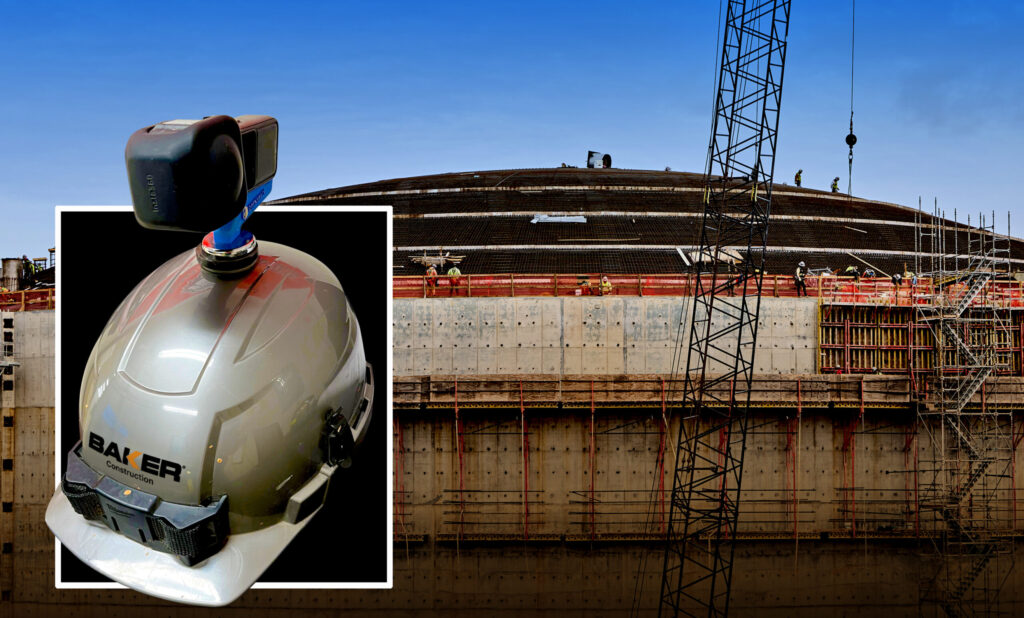Building the Future: How Baker Construction Is Harnessing AI to Transform Jobsites
Virtual reality and artificial intelligence are poised to transform the construction industry — and Baker Construction is putting both to use on jobsites to improve safety, enhance collaboration, and increase efficiency.
Last year, Baker began deploying advanced AI-powered analytics paired with helmet-mounted cameras. Users outfitted with the cameras can capture videos and images as they walk through the jobsite. This data can be used to map images to building plans, identify potential hazards or obstacles, and strengthen collaboration. Footage can even be integrated with virtual models to review upcoming work using augmented reality.
Enhancing Production to Drive the Schedule
Baker’s project teams are using the system to document project needs and streamline communication between the field and office.
“Our team regularly walks the jobsite in critical areas to document preconstruction, construction, and final as-built conditions,” said Industrial Project Manager Adam Duffin. “Team members and leaders who are offsite or have limited daily access are able to check progress in real time.”
Duffin’s team saw significant benefits at an aluminum rolling mill project in Alabama. After identifying an issue with access and egress, project leaders “walked” the project in real time to define a new path — all from a conference room. The project team also used comparison photos and time-lapse videos to identify strategies for increasing efficiency in other areas of the project.
Increasing Transparency for Owners and Clients
The benefits could extend beyond the field in the future. The technology could be used to provide project partners and even owners can get a real-time understanding of progress, jobsite logistics, quality validation, and more.
“Instead of relying on written reports or standalone pictures that don’t tell the full story, owners and clients can walk the jobsite daily as if they are on it themselves,” said Duffin. “Engineering teams can check in on the progress of construction to understand when design changes or updates could potentially impact progress.”
Many of Baker’s industrial construction projects are in remote locations, making this a potential game changer for meeting aggressive schedules. With better data in hand, project teams and owners can make informed decisions more quickly and with greater confidence.
Maximizing Value for Clients
The success of the deployment is due in part to the partnership between Baker’s technology and operations teams. Developing a clear business case, taking time to evaluate options, and developing a plan to optimize the solution’s benefits for both Baker and clients are key, according to Jennifer Hohman, Baker’s Chief Technology and Information Officer.
“At Baker, we are always exploring new technologies to improve how we work, but we are very selective about where we invest our resources,” said Hohman. “It’s not about chasing the latest trend. Our directive is to enable our co-workers to be as fast, efficient, and safe as possible in support of meeting client and project goals.”
Piloting the technology on jobsites in South Florida enabled IT and operations to ensure the technology checked all the right boxes. It also provided space for determining how to best maximize the solution for Baker and its clients.
“Having the tools is only half the equation,” Hohman noted. “Understanding how to deploy those tools to the benefit of our people and our clients — that’s where real value is created.”

